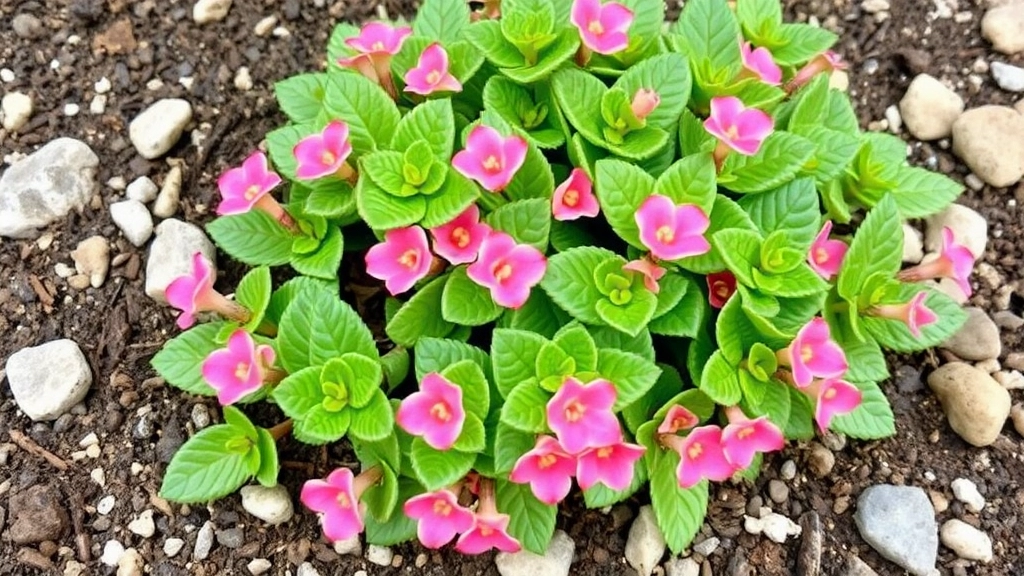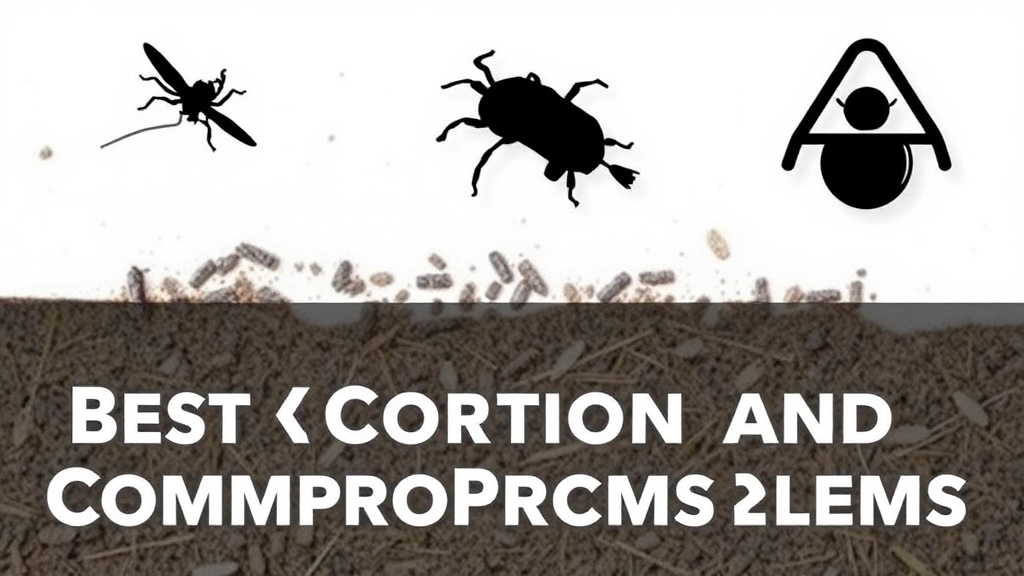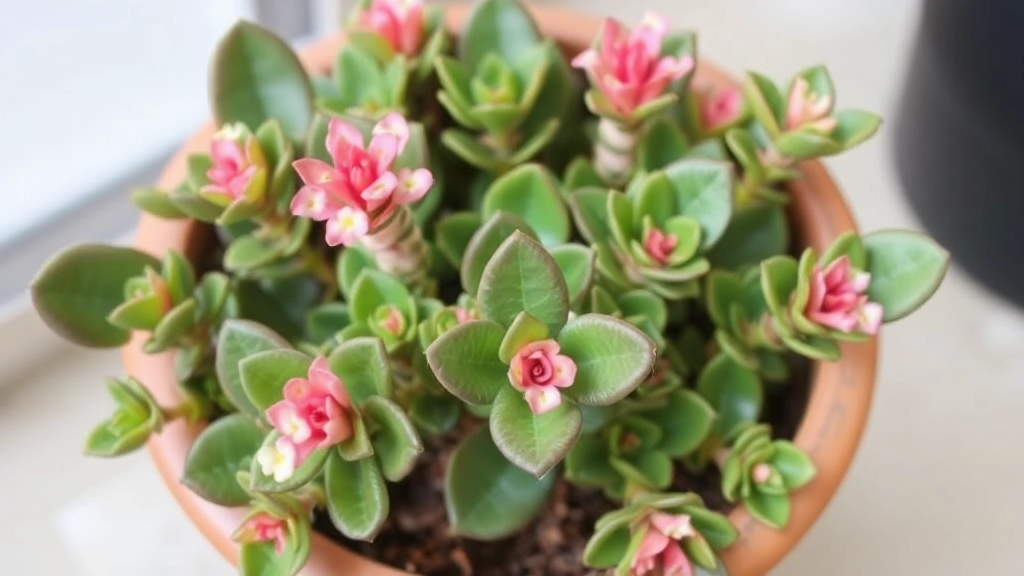Kalanchoe Tomentosa Care Guide
Looking to keep your Kalanchoe Tomentosa thriving? This guide will walk you through everything you need to know. From perfect lighting conditions to the ideal watering schedule, we’ve got you covered. Let’s dive into the essentials of caring for this charming succulent.
Lighting Conditions
First off, light is key. Kalanchoe Tomentosa loves bright, indirect sunlight. Place it near a window where it can soak up plenty of light without getting scorched.
Soil Choice
Next, consider your soil choice. Well-draining soil is a must to prevent root rot. A mix of cactus soil and perlite works wonders.
Tips for Success
Follow these simple tips, and you’ll have a happy, healthy Kalanchoe Tomentosa in no time.
Light Requirements for Kalanchoe Tomentosa
When it comes to caring for your Kalanchoe Tomentosa, understanding its light requirements is crucial.
Many plant owners often wonder, âHow much light does my Kalanchoe really need?â
This succulent thrives in bright, indirect sunlight, making it a perfect candidate for windowsills or areas with ample natural light.
Key Light Requirements:
- Bright Indirect Light: Aim for about 6 hours a day.
- Avoid Direct Sun: Too much direct sunlight can scorch the leaves.
- Signs of Insufficient Light: Look out for elongated stems and pale leaves, which indicate that your plant is stretching for light.
For those of you living in less sunny climates, consider using grow lights.
These can provide the necessary illumination to keep your Kalanchoe healthy and vibrant.
Quick Tips:
- Rotate your plant every few weeks to ensure even growth.
- Use sheer curtains if your plant is near a south-facing window to diffuse harsh rays.
If you’re looking for more detailed care instructions, check out our complete guide on caring for Kalanchoe Tomentosa. Additionally, for those interested in other varieties, our guide to Kalanchoe succulent varieties can be very helpful.
Best Soil and Drainage Practices for Kalanchoe Tomentosa

So, you’ve got your Kalanchoe Tomentosa, and now you’re wondering about the best soil and drainage practices to keep it thriving.
Choosing the right soil is crucial for the health of your plant.
- Well-draining soil is a must.
- Look for a cactus or succulent mix.
- If you can’t find one, you can easily make your own by mixing regular potting soil with sand or perlite.
- pH level matters.
- Aim for a slightly acidic to neutral pH (around 6.0 to 7.0).
- This helps your Kalanchoe absorb nutrients effectively.
- Don’t forget about drainage!
- Use pots with drainage holes.
- This prevents water from sitting at the bottom, which can lead to root rot.
- Consider adding a layer of gravel or stones at the bottom of the pot.
- This extra layer helps with drainage and keeps the roots dry.
- Avoid using heavy soils.
- Soils that retain too much moisture can suffocate your plant.
Watering Schedule and Techniques
When it comes to caring for Kalanchoe Tomentosa, one of the most common concerns is ensuring the right watering routine. Overwatering can lead to root rot, while underwatering can cause the leaves to shrivel. Striking a balance is essential for your plant’s health.
Understanding Watering Needs
Kalanchoe Tomentosa, also known as the Panda Plant, thrives in well-draining soil and requires a specific watering schedule:
- Frequency: Water every 2-3 weeks during the growing season (spring and summer).
- Check Soil Moisture: Always check the top inch of soil. If it’s dry, it’s time to water.
- Winter Care: Reduce watering to once a month during the dormant season (autumn and winter).
Watering Techniques
Using the right techniques can make a significant difference in your plant’s well-being:
- Watering Method: Water thoroughly until it drains out of the bottom of the pot. This ensures the roots receive adequate moisture.
- Avoid Water Accumulation: Never let your Kalanchoe sit in water. Empty any excess from the saucer to prevent root rot.
- Use Room Temperature Water: Cold water can shock the plant. Room temperature water is ideal.
Signs of Over or Underwatering
Recognizing the signs can help you adjust your care:
- Overwatering: Yellowing leaves, mushy stems, and a foul smell from the soil.
- Underwatering: Wrinkled, shriveled leaves that may drop off.
By keeping a close eye on your Kalanchoe Tomentosa’s watering needs, you can ensure it remains healthy and vibrant. For more detailed care instructions, check out our Panda Plant Kalanchoe Tomentosa Ultimate Care Guide. Additionally, if you’re interested in propagation tips, our Step-by-Step Guide on How to Propagate Kalanchoe Tomentosa can be very helpful.
Temperature and Humidity Preferences

As we explore the optimal conditions for Kalanchoe Tomentosa, understanding temperature and humidity is crucial for its thriving growth.
Ideal Temperature Range
Kalanchoe Tomentosa prefers a warm climate, making it essential to maintain the right temperature for your plant.
- Daytime: Aim for temperatures between 20°C to 25°C.
- Nighttime: A drop to around 15°C to 18°C is acceptable.
Extreme temperature fluctuations can stress the plant, so it’s best to keep it in a stable environment.
Humidity Levels
Humidity plays a significant role in the health of Kalanchoe Tomentosa.
- Low Humidity: This succulent thrives in low to moderate humidity levels.
- Ideal Range: Aim for 30% to 50% humidity.
If your home is particularly humid, ensure good air circulation to prevent fungal issues. Conversely, if your environment is too dry, consider using a pebble tray or a humidifier to maintain moisture.
Signs of Stress
Be mindful of your plant’s signals:
- Drooping Leaves: This could indicate too low temperatures.
- Leaf Drop: Often a sign of excessive humidity or temperature stress.
Maintaining the right temperature and humidity will set a solid foundation for your Kalanchoe Tomentosa’s health.
Repotting and Pruning for Healthy Growth
When caring for your Kalanchoe Tomentosa, you may wonder how to keep it thriving in its pot. Repotting and pruning are essential practices that ensure your plant remains healthy and vibrant.
Why Repotting Matters
Repotting is crucial for several reasons:
- Root Health: Over time, roots can become cramped, limiting growth. Repotting allows for more space and nutrients.
- Soil Refresh: Old soil can lose its nutrients. Fresh soil provides essential minerals for growth.
- Pest Prevention: Repotting can help identify and remove pests or diseases lurking in the soil.
When to Repot
- Every 2-3 Years: This is generally a good rule of thumb.
- Signs to Watch For: If you notice roots growing out of the drainage holes or if the plant appears stunted, it’s time to repot.
How to Repot
- Choose a slightly larger pot with drainage holes.
- Prepare fresh, well-draining soilâconsider a cactus mix or a blend of potting soil and sand.
- Gently remove the plant from its current pot, taking care not to damage the roots.
- Place the plant in the new pot, filling in around it with fresh soil.
- Water lightly to settle the soil.
Pruning for Health
Pruning is just as important as repotting. It helps maintain the shape and encourages new growth.
- Remove Dead Leaves: Snip off any brown or shrivelled leaves to promote airflow.
- Shape the Plant: Trim back any leggy growth to encourage a bushier appearance.
- Timing: Prune in spring or early summer when the plant is actively growing.
Benefits of Pruning
- Improved Air Circulation: This helps prevent fungal diseases.
- Enhanced Aesthetics: A well-pruned plant looks more appealing and healthy.
By incorporating regular repotting and pruning, your Kalanchoe Tomentosa will flourish. For more detailed instructions, check out our complete guide on caring for Kalanchoe Tomentosa. Additionally, if you’re interested in propagation methods, our step-by-step guide on propagating Kalanchoe Tomentosa can be very helpful.
Pest Control and Common Problems

So, you’ve got your Kalanchoe Tomentosa thriving, but what happens when those pesky critters decide to crash the party?
Common Pests to Watch For:
- Mealybugs: These little white fluff balls love to hide in the leaf joints.
- Spider Mites: Tiny and almost invisible, they can cause serious damage if left unchecked.
- Aphids: They suck the sap right out of your plant, leading to stunted growth.
Signs of Trouble:
- Yellowing leaves?
- Stunted growth?
- Webbing on the leaves?
If you spot any of these issues, don’t panic! Here’s how to tackle them:
Pest Control Strategies:
- Manual Removal:
- Use a cotton swab dipped in alcohol to wipe away mealybugs.
- Spray the plant with water to dislodge spider mites.
- Natural Remedies:
- A mix of water and dish soap can do wonders. Just spray it on the affected areas.
- Neem oil is a fantastic organic option that can help with a variety of pests.
- Chemical Solutions:
- If things get out of hand, consider a commercial insecticide. Just make sure it’s safe for succulents.
Preventive Measures:
- Quarantine New Plants: Always keep new additions away from your existing plants for a couple of weeks.
- Regular Inspections: Check your plants weekly for any signs of pests.
- Cleanliness is Key: Dust your leaves occasionally to keep them healthy.
Keeping your Kalanchoe Tomentosa free from pests is all about being proactive.
VII. Propagation Methods for Kalanchoe Tomentosa
As we explore the various aspects of caring for Kalanchoe Tomentosa, propagation is an exciting avenue that many plant enthusiasts often consider.
Why Propagate Kalanchoe Tomentosa?
Are you looking to expand your collection or share this beautiful succulent with friends? Propagation is a rewarding way to achieve this. Kalanchoe Tomentosa, commonly known as Panda Plant, can be easily propagated through several methods.
FAQs on How to Care for Kalanchoe Tomentosa
What type of soil is best for Kalanchoe Tomentosa?
Kalanchoe Tomentosa thrives in well-draining soil. A cactus or succulent mix is ideal. If unavailable, you can create your own mix by combining regular potting soil with sand or perlite.
What is the ideal pH level for Kalanchoe Tomentosa soil?
The optimal pH level for Kalanchoe Tomentosa is slightly acidic to neutral, around 6.0 to 7.0. This helps the plant absorb nutrients effectively.
How important is drainage for Kalanchoe Tomentosa?
Drainage is crucial to prevent root rot. Use pots with drainage holes and consider adding a layer of gravel or stones at the bottom to enhance drainage.
What temperature range does Kalanchoe Tomentosa prefer?
Kalanchoe Tomentosa prefers daytime temperatures between 20°C to 25°C and nighttime temperatures around 15°C to 18°C. Avoid extreme temperature fluctuations to prevent plant stress.
What humidity levels are ideal for Kalanchoe Tomentosa?
This succulent thrives in low to moderate humidity levels, ideally between 30% to 50%. Ensure good air circulation in humid environments to prevent fungal issues.
What are common pests that affect Kalanchoe Tomentosa?
Common pests include mealybugs, spider mites, and aphids. Mealybugs appear as white fluff balls, spider mites are tiny and almost invisible, and aphids suck the sap from the plant, leading to stunted growth.
How can I control pests on my Kalanchoe Tomentosa?
You can control pests through manual removal, natural remedies, or chemical solutions. Use a cotton swab dipped in alcohol for mealybugs, spray water to dislodge spider mites, or apply a mix of water and dish soap or neem oil. For severe infestations, consider a commercial insecticide safe for succulents.
What preventive measures can I take to avoid pest infestations?
Preventive measures include quarantining new plants for a couple of weeks, regular inspections, and keeping your plants clean by dusting the leaves occasionally.
What are the signs that my Kalanchoe Tomentosa is stressed?
Signs of stress include drooping leaves, which may indicate low temperatures, and leaf drop, which can be a sign of excessive humidity or temperature stress. Monitor these signs to maintain optimal conditions for your plant.
References
-
How to Grow and Care for Kalanchoe Tomentosa
-
Kalanchoe Tomentosa: Growing Panda Plant Indoors
-
Kalanchoe tomentosa (Panda Plant)
